Warner Elevator Row
The title of this this report, “Warner Elevator Row”, as of mid-November, is technically incorrect. Something bad’s happened to the buildings that make up the complex in the town of Warner Alberta, something unexpected, out of the blue and only recent. Yup, they’ve demolished two of the prairie sentinels that make up this unique group, and with that Canada went from having two “elevator rows” to one. Compare that to years ago when these were down right commonplace across the prairies.
So there you have it, two historically significant grain elevators in Warner are no more, a sad event indeed. Strangely, none of these buildings were or are in any way protected which makes one worry about the others still standing. Tick, tick, tick…is time running out?
Something really bothers me about this event. Not just the obvious issue that the buildings were torn down. It was the dead silence heard during and afterwards. Outside some grumblings from us hardcore elevator enthusiasts, who are a passionate lot but few in number, a niche interest group at best, no one seemed to give a damn. Those who flattened the buildings did so nonchalantly and somehow knew that for the most part, it would go unnoticed.
Sure there was the at least one “human interest” news report broadcast in which interviews were done with experts Jim Pearson and Cody Kapcsos, both who gave it their college best. In the segment a disinterested reporter “laments” the loss and as soon as it wraps he’s in the van and on his way. The story is broadcast at some slow-news part of the day then is quickly shelved never to be seen again. Was anyone listening anyway?
I guess shouldn’t be surprised that no one gives a hoot. Grain elevators, in the view of most are anything but cool or even remotely interesting and I doubt we’ll ever convince people otherwise. The general public cares not. Even local Warnerites (Warnerinians?) and I called some, simply shrug their shoulders when the subject of the loss is brought up. It’s a trivial matter it seems. People want to hear the real news, stuff that effects them and impacts their lives…like how the Kardashians are doing! “Boohoo, we lost a dusty old grain elevator in some crappy one-horse town…WAIT! I heard KIM had ASS implants!!!”
That sort of general apathy it a big monster to slay.
While I’d love to go on ranting I guess I had better move forward. I’m a technical writer, not an iconoclast, although now and then I jump on some bandwagon and spew forth a powerful editorial with a religious furor. All I might add, whether anyone is listening or not – hello? Anyone? HELLO! Okay I’ll fulfill my obligations of listing hard facts and figures. That’s my area of expertise.
Let’s touch on what makes a row, in case you don’t know. It’s a group of elevators comprised of four or more separate loading points in a line. A point can be a single elevator, an elevator with an annex or annexes or pair of twined elevators. Who owns each complex doesn’t really matter, it’s all about the numbers.
Warner, until this event, had two sets of twins and two singles, for four possible loading points, the minimum needed by definition. With the loss of the two elevators this month there is now two singles and one twin. The row status is no more and with that the prairies lost two more historic buildings. Seen as insignificant by some, elevators and elevator rows at one time defined the prairies. Farmers and grain, grain elevators and trains hailing grain, all interconnected, that WAS the prairies. Period.
The first grain elevator in Warner was built in or around 1908. Over the years a good dozen such buildings have called the town home, not all at the same time of course. In more recent times there were as many as nine elevators across seven loading points (my data in places is sketchy so I may be off a bit). Most of the other prairie sentinels were gone by the early 2000s.
Let’s take a look at the elevators in this report.
Starting in the north is a facility built in the late 1950s (some people say 1960). When new it belonged to United Grain Growers (UGG, but NOT the trendy boot company), a good sized player in the Canadian grain industry. In the 1980s, the building was upgraded mechanically and those large metal bin annexes were added. The current owner I am told is Viterra, which is a company that comprises a number of legacy grain firms, UGG included. They do load grain cars, I believe Viterra handles only mustard seed here, but none were seen the day of our visit. An operating wooden grain elevator is pretty rare by the way.
The next elevator is one that fell recently. It was also the oldest and smallest of all the buildings we’ll discuss. This structure dates from 1913 and once belonged to the Alberta Farmers Cooperative Elevator Company and later UGG. In the 1920s, it came under Alberta Wheat Pool ownership, a farmer collective and historically the largest grain handling company in the province. This building was rather odd in some ways. It has a hip-roof style cupola which by the time it was built was considered somewhat outdated. Most elevators from the early 1900s on used the more common style gable roof cupola (which is seen on all the other elevators in Warner). The silver-coloured metal cladding seen was a fire prevention measure.
In 1951 the building was twined. The new addition acted as the main elevator, with old structure converted (essentially) to an annex. The pair later came under the ownership of a company called Agricore, in the 1990s, which was formed through he merger of the Alberta and Manitoba Pools. Just before the turn of the century, a small local firm called Demeter Agro took over this complex and most of the other elevators in the whole row (and was responsible I guess for their collective survival).
Later Demeter is listed as being owned by Agricore United (Agricore mentioned earlier plus merger partner UGG, post 2001). It’s assumed Viterra (2007- Agricore United and the Saskatchewan Pool combined) acquired the facility by merger. Whether it is used to load grain or just to store grain or what ever its current status is, is not clear. Just tracing a building’s lineage is sometimes a big challenge, more so it seems in Warner.
The 1951 elevator, so far, still stands. For now. None of these elevators are in any way historically protected, recall, although if this one was to fall, wouldn’t it have gone down with its twin? Who knows?
Next up is an elevator that’s come down. The building was constructed in 1928 for the “Pool” (remember them?) as their #2 facility. It was not uncommon for a firm to own more then one elevator or loading point in any one town, by the way (am I using that too much?). The building lasted a couple years under Agricore ownership before Demeter Agro acquired. Later Viterra took it over and their sign was seen in the building’s side before it fell. I notice this elevator was connected via a pipe with the 1913/1951 twins suggesting that all three were operated as one unit. Note, outside the most northerly elevator and the old silver one, all others were in AWP blue/green paint.
The next two elevators comprise a twin complex. On the north side is a former Alberta Pacific Grain elevator (the old ghost sign can be seen) built in 1918. The company Federal Grain controlled AP for many years and in the late 1960s finally folded it into itself. At that time a new elevator, the south twin with an annex, was built, with all under the Federal Grain banner. Soon after these buildings came under AWP control, like eventually most of the electors in town.
At some point, likely fairly recently, a new square-building annex was added to the north side of the twins. It looks quite modern.
Like others in town this elevator came under control of Demeter Agro and later Viterra. Grain is still loaded from this facility from time to time. Another wood-cribbed elevator still in use, nice. What’s planned for these elevators is not known but I can’t help think time is ticking. Calls to Viterra have gone unanswered – as expected they don’t have time for us crazy history buffs.
You may ask, why did the two elevators get demolished. Companies that have to turn a profit have no room for emotion and it’s likely they were too old, worn out or were in some way a liability and needed to be stricken from the books. Nothing more. They were not torn down to piss-off us “vatorologists” (stealing Jim Pearson’s term), although in the end one can’t help but be mad. We watch and hope and pray that things go the way we want, from a historical perspective, which sometimes conflicts with the realities of business.
A number of other elevators were once located here which we won’t discuss much. This post is already way too long. One firm represented is of interest though, Ogilvie Flour Mills (later AWP #3). I’m currently working, along with others, to preserve the still standing Ogilvie elevator in nearby Wrentham Alberta.
The track that passes in front of these elevators is the CPR’s Montana Subdivision, a roller-coaster profile stretch of track, running from Lethbridge to the US border. This was at one time a narrow-gauge line. It’s moderately busy. We visited Warner in late August and noticed track work was being done in the area.
The pictures seen in this report were taken on our August visit, where were were accompanied by friends Jason and Rebecca Sailer (good guides, since they are from the area). Other pictures seen are from friends and associates who have visited the row to record how they see it. You’ll notice in one shot, submitted by Steve Boyko (the Train Geek) and taken only weeks before the worst happens, a crane captured perhaps unknowingly, is seen sitting behind the 1913 elevator. This was the same crane that was latter used to demolish the structures.
On our visit, storm clouds threatened, which knowing what I know today I guess could be looked upon as a harbinger of things to come. In a way.
At one time there were something like seventeen hundred traditional wood-cribbed grain elevators in Alberta and thousands more in Saskatchewan and Manitoba. Today there are some two hundred and fifty left in the province. Oops, subtract two from that total. The only remaining grain elevator row in the country, which is comprised of five PROTECTED elevators (four loading points total) in Inglis Manitoba. Elevator rows at one time were common. For example, Vulcan Alberta had NINE in a line, as they’d often brag.
“Let’s all bow our heads in honour of the fallen elevators…is that a piper playing Amazing Grace…no, it’s hard make out…I got it, off in the distance, it’s the faint wah-wah of a sad trombone.” How fitting.
The following grain elevator enthusiasts have contributed photos to this report…
Steve Boyko of ManitobaGrainElevators.ca, Cody Kapcsos of Flickr-StirlingLab, Frank Lloyd, Dan Overes of DanOCan.com and Jason Sailer.
All images are under copyright of each respective owner.
To some other elevators we’ve explored, go here..
Prairie Sentinels – Milk River Alberta.
Prairie Sentinels – Hodgeville Saskatchewan.
Prairie Sentinels – Big Valley Alberta .
If you wish more information on what you’ve seen here, by all means contact us!
Date of adventure: August, 2014, October and November 2014 for contributors.
Location: Warner, AB.
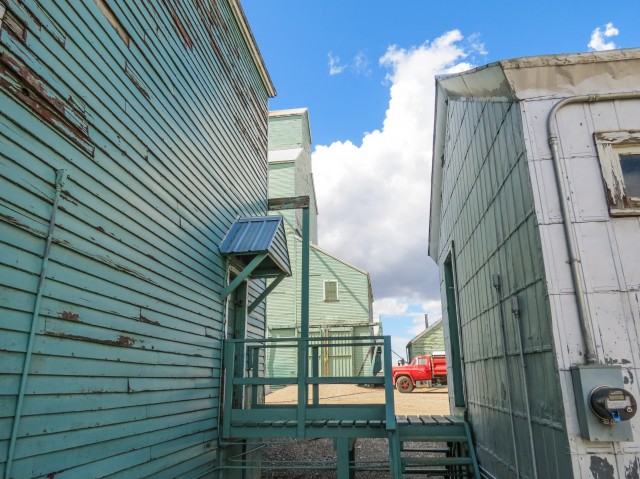
We drop by Warner’s Elevator Row.

Connie, the bunny hunter.
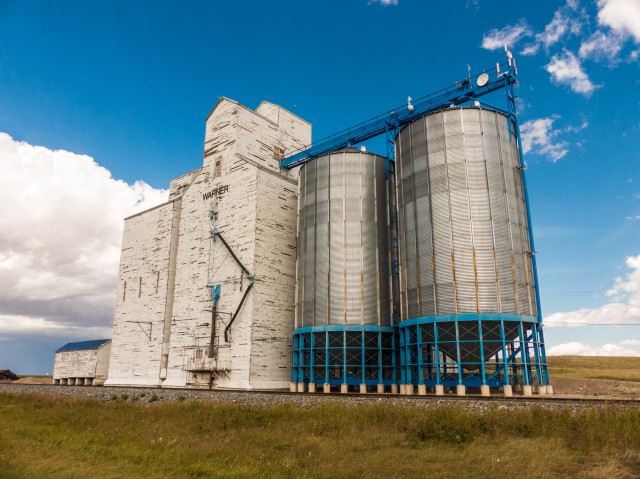
The most northerly elevator, built in the late 1950s.
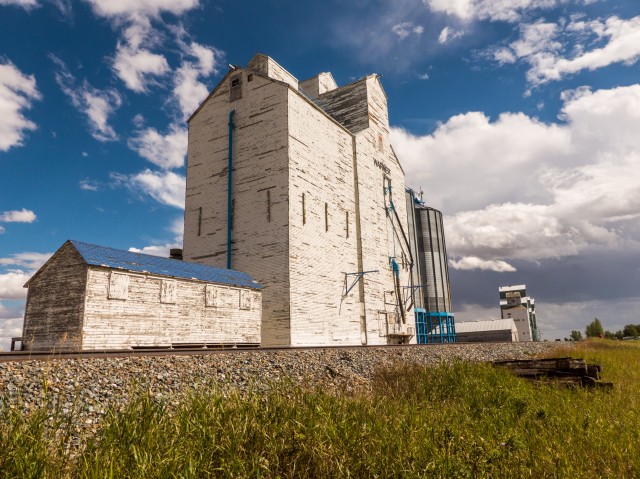
This building is still in use. Now that’s rare.
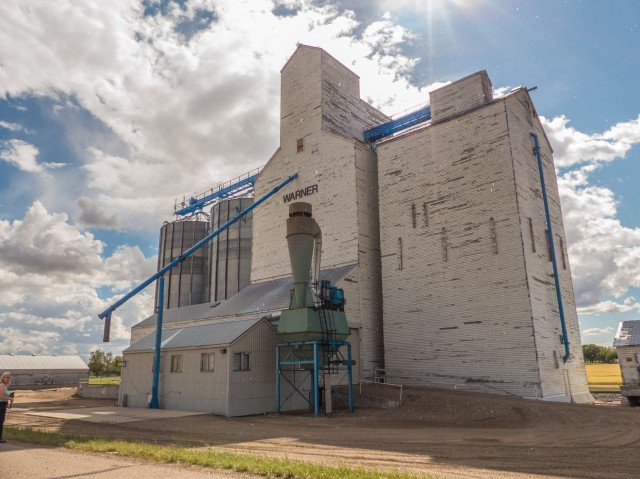
The structure, when new, belonged to United Grain Growers.
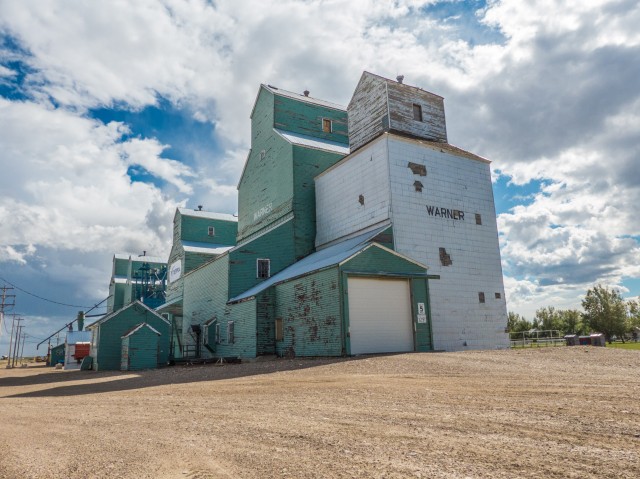
The silver elevator was torn down only a couple weeks before this report was written.
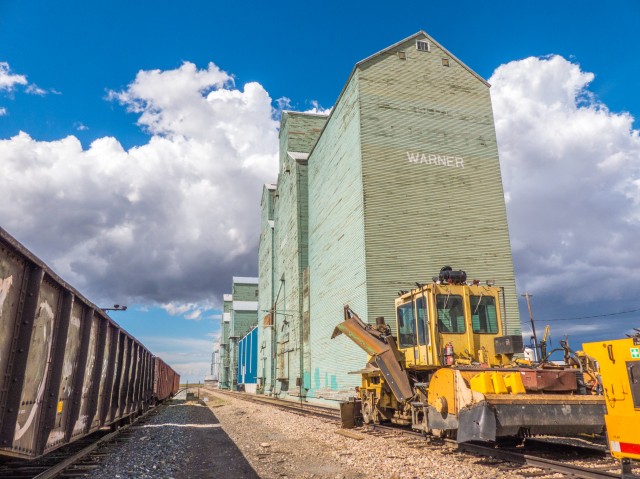
Track in the area is being worked on.
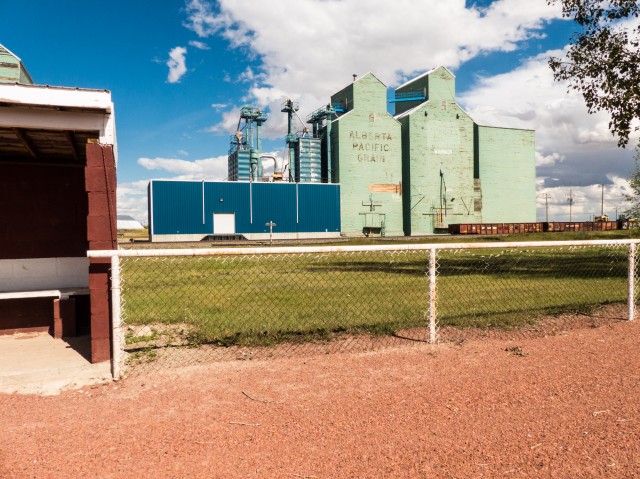
An old Alberta Pacific Grain ghost sign can be seen on the left elevator.
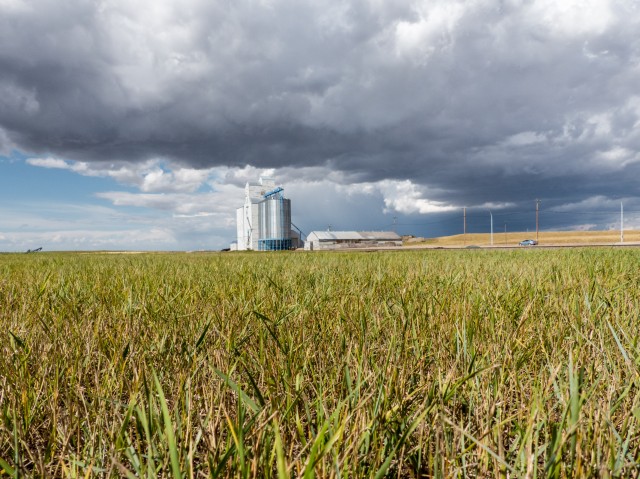
Storm clouds threaten…
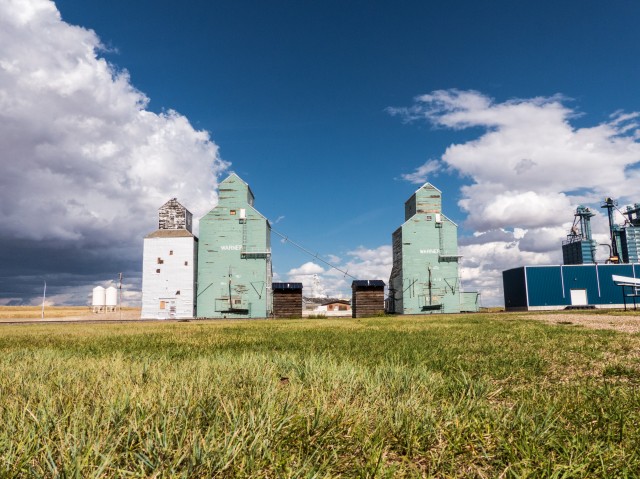
The elevator on right also has recently been demolished.
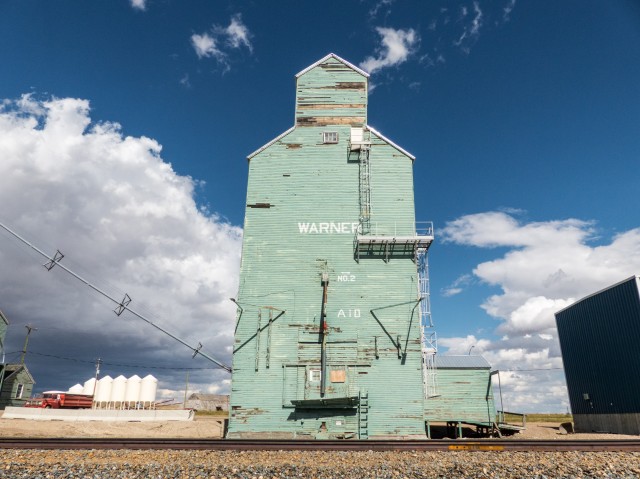
Gone, November 2014…
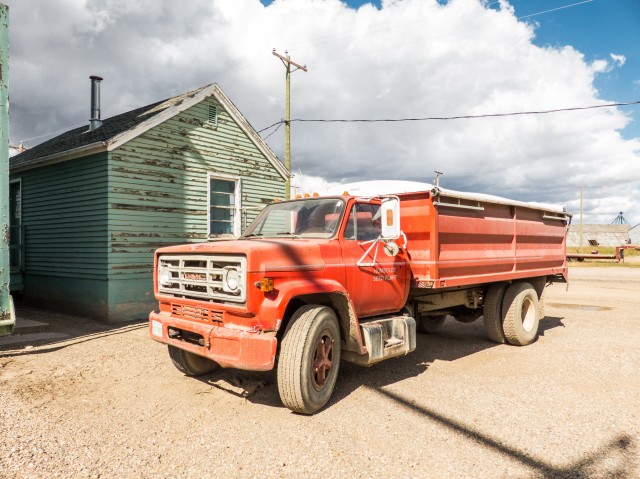
An old grain hauler completes the scene.
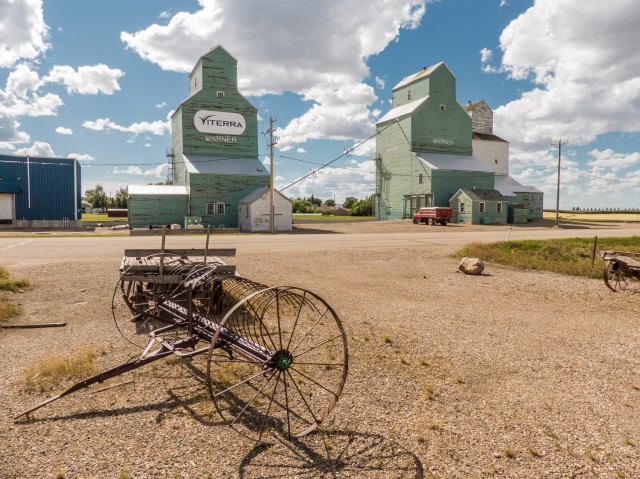
These buildings (l to r) date from 1928, 1951 and 1913.
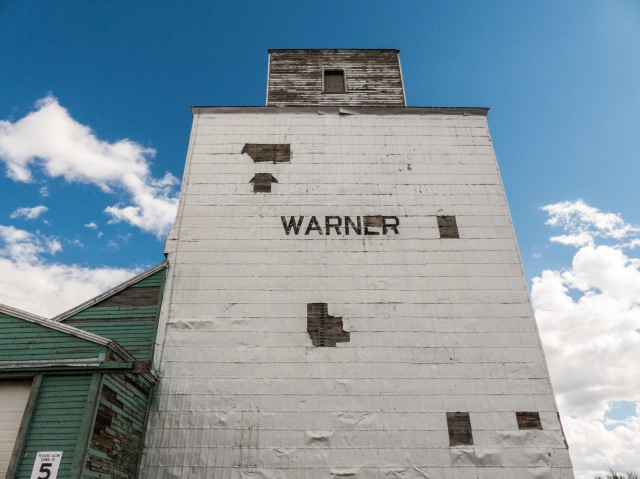
As of November 2014 this one’s no more.
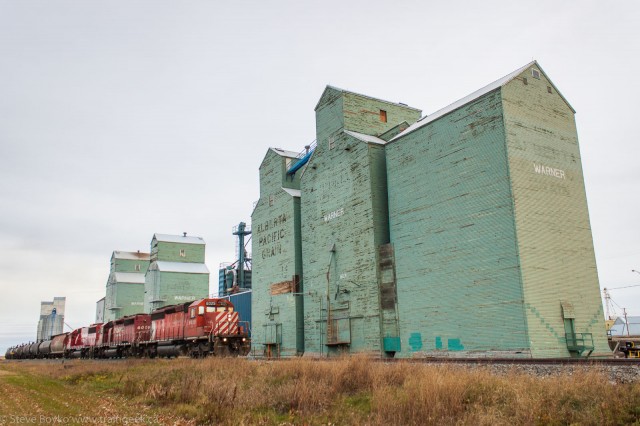
Steve Boyko, on a recent visit, catches a passing train.
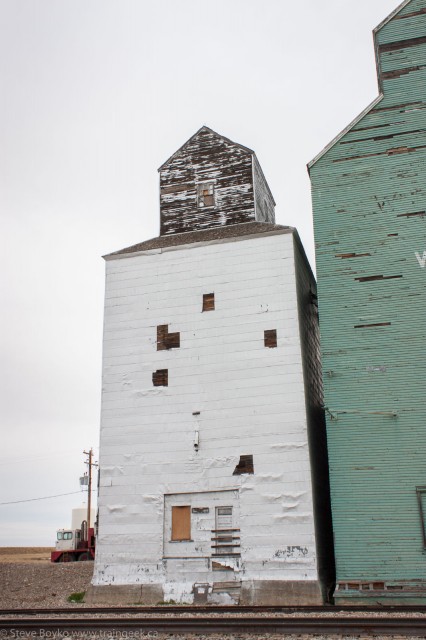
Late October…is that the crane in back? Photo Steve Boyko.
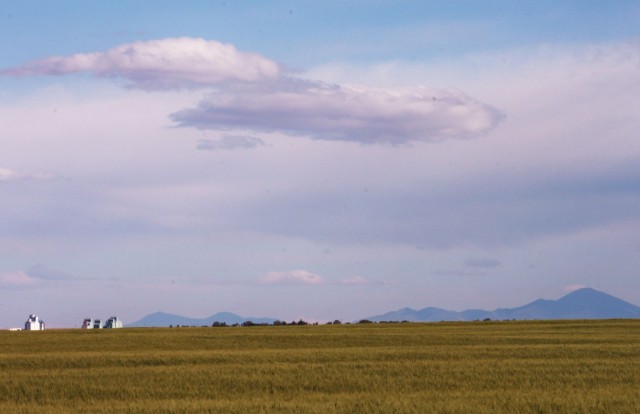
Mountains in the distance. Photo by Cody Kapcsos.
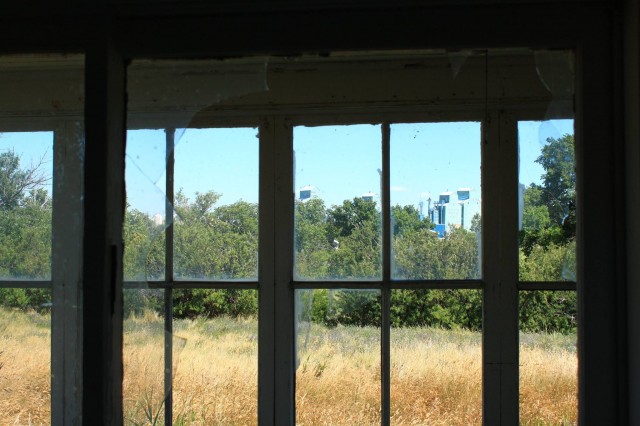
A view from a window. Photo by Cody Kapcsos.
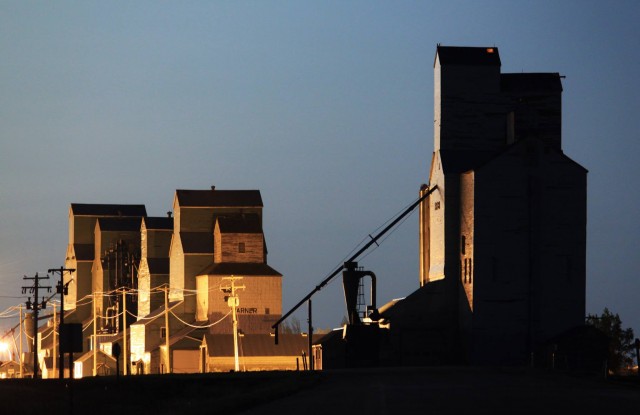
A once common scene in many small prairie towns. Photo Cody Kapcsos.
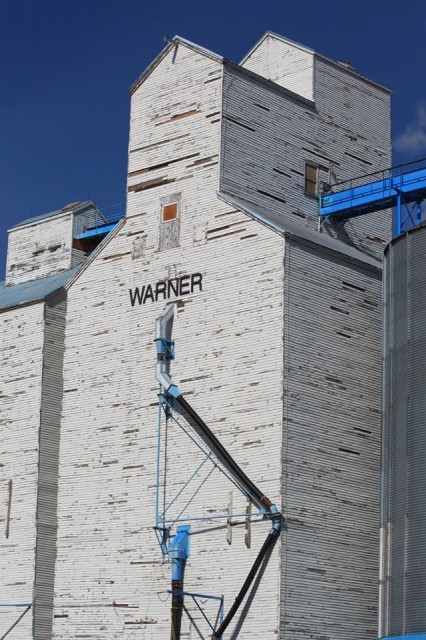
Every elevator displays the town’s name. Cody Kapcsos.
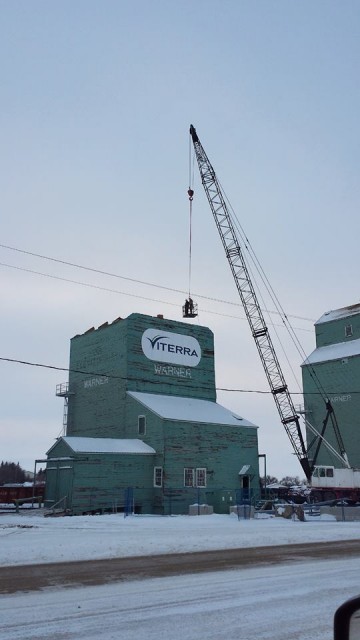
Going…going…Photo Cody Kapcsos.
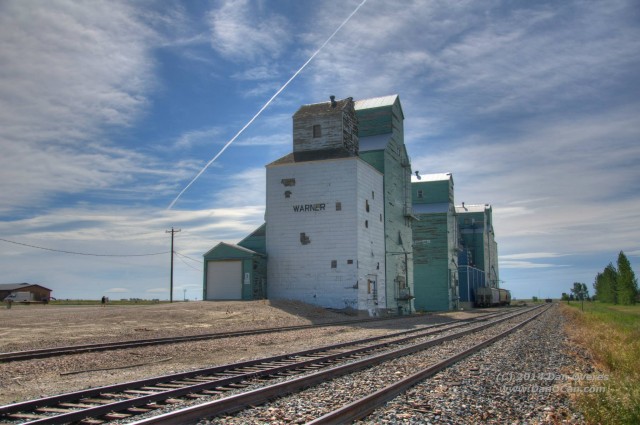
Dan Overes captures a great shot from earlier this year.
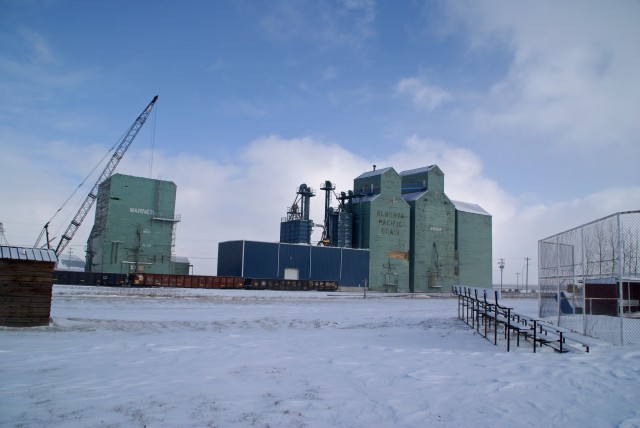
The saddest thing an elevator enthusiast can be witness to. Photo Jason Sailer.
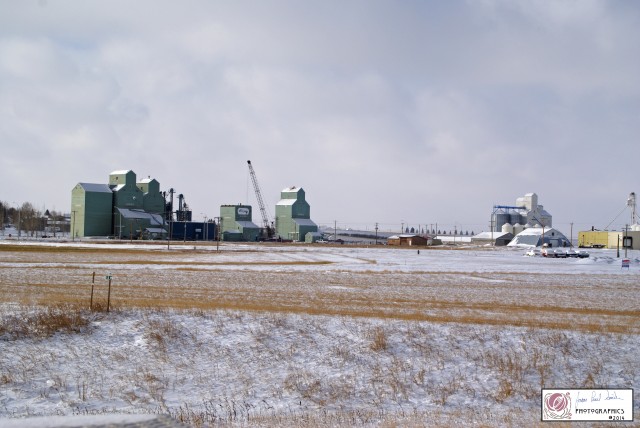
November 2104. Photo by Jason Sailer.
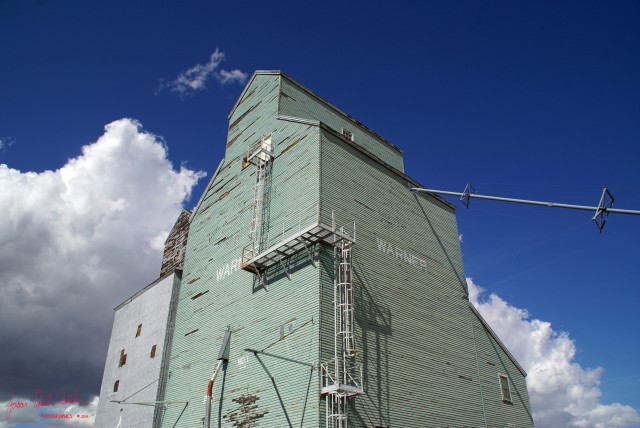
Jason Sailer contributed this fine photo.
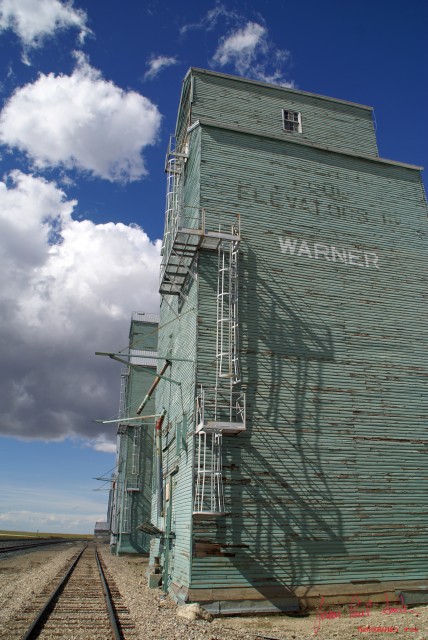
In better times. Photo Jason Sailer.
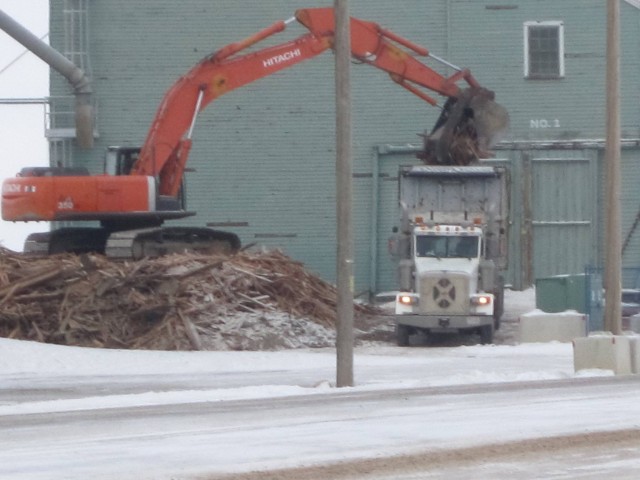
Machinery cleaning up wood scraps. Photo by Frank Lloyd.

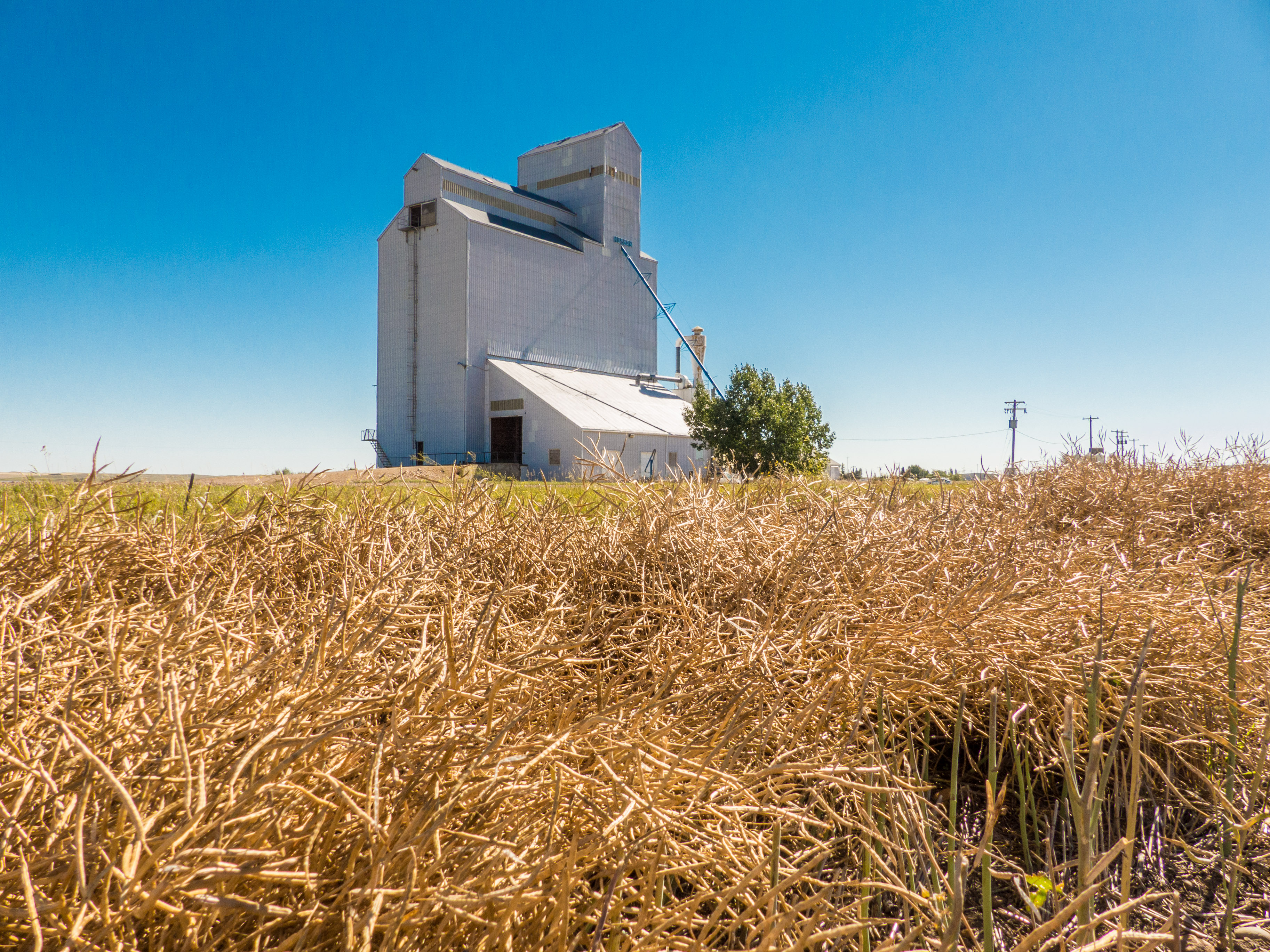
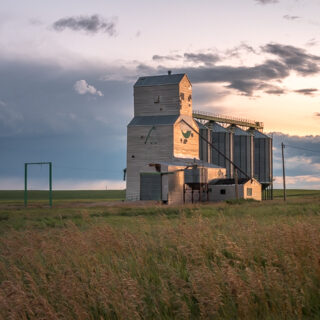
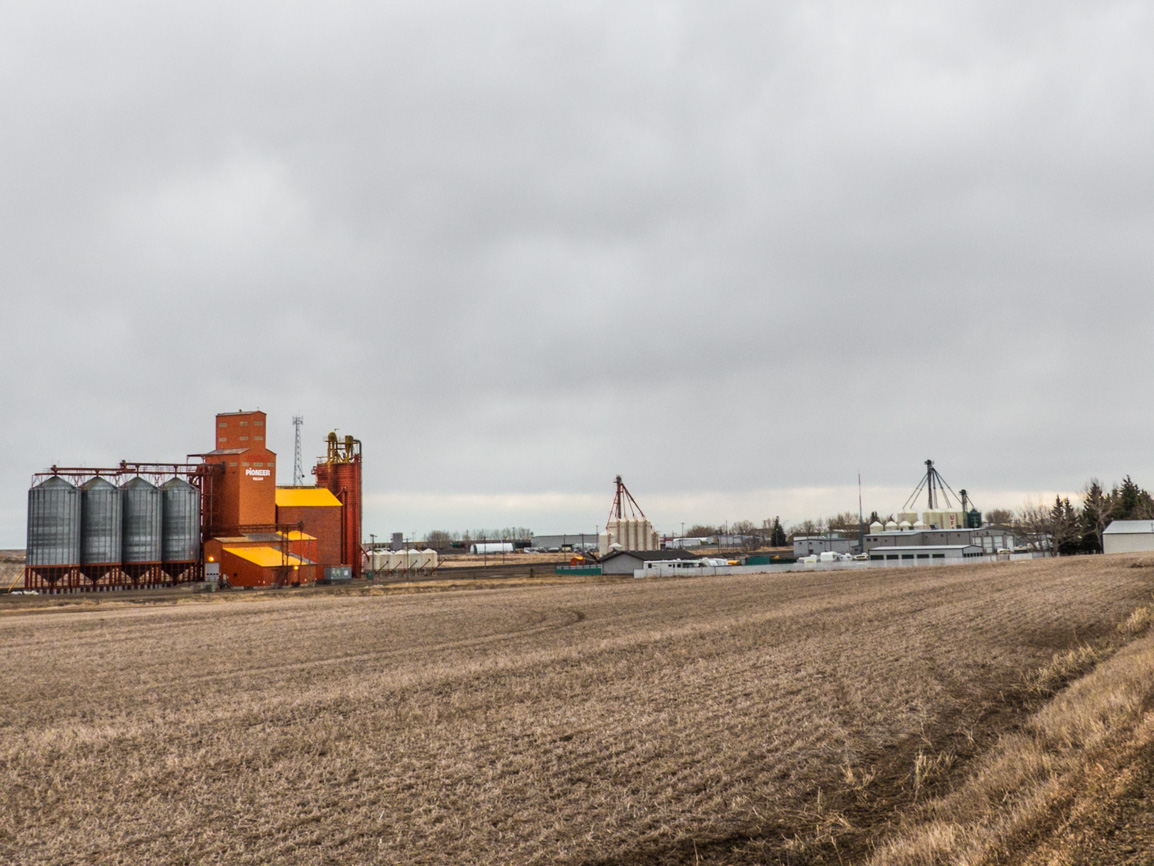

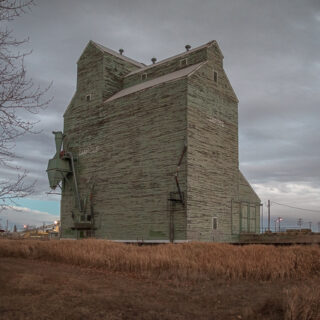
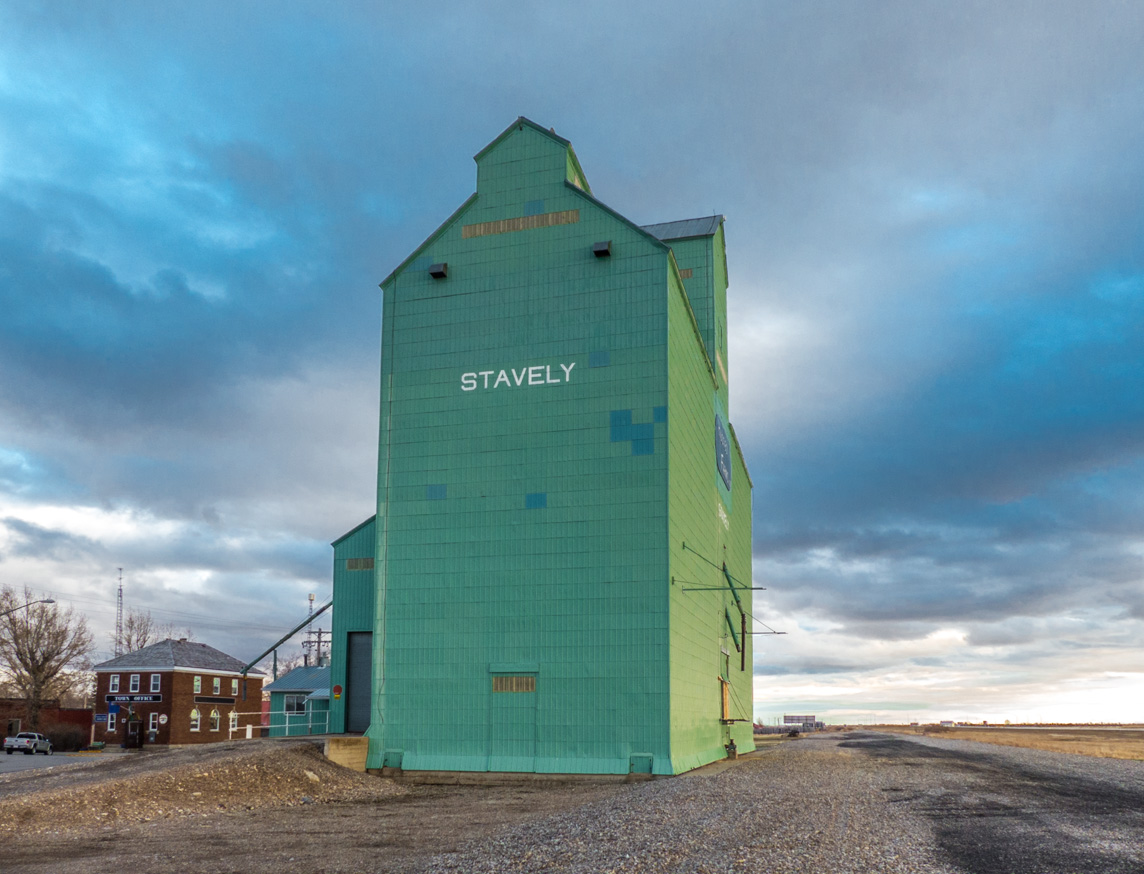
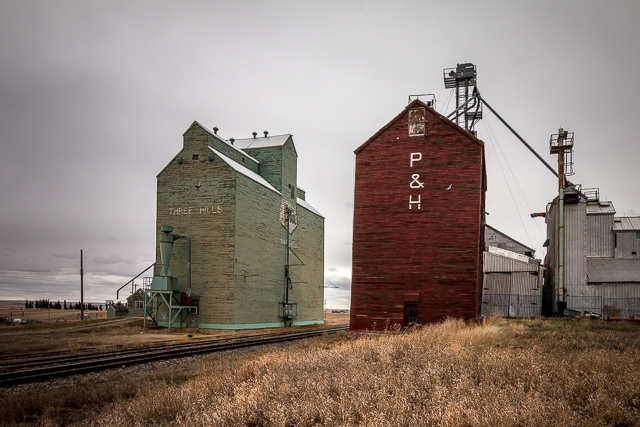
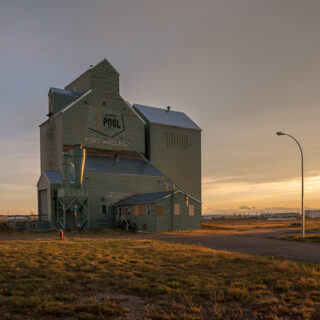
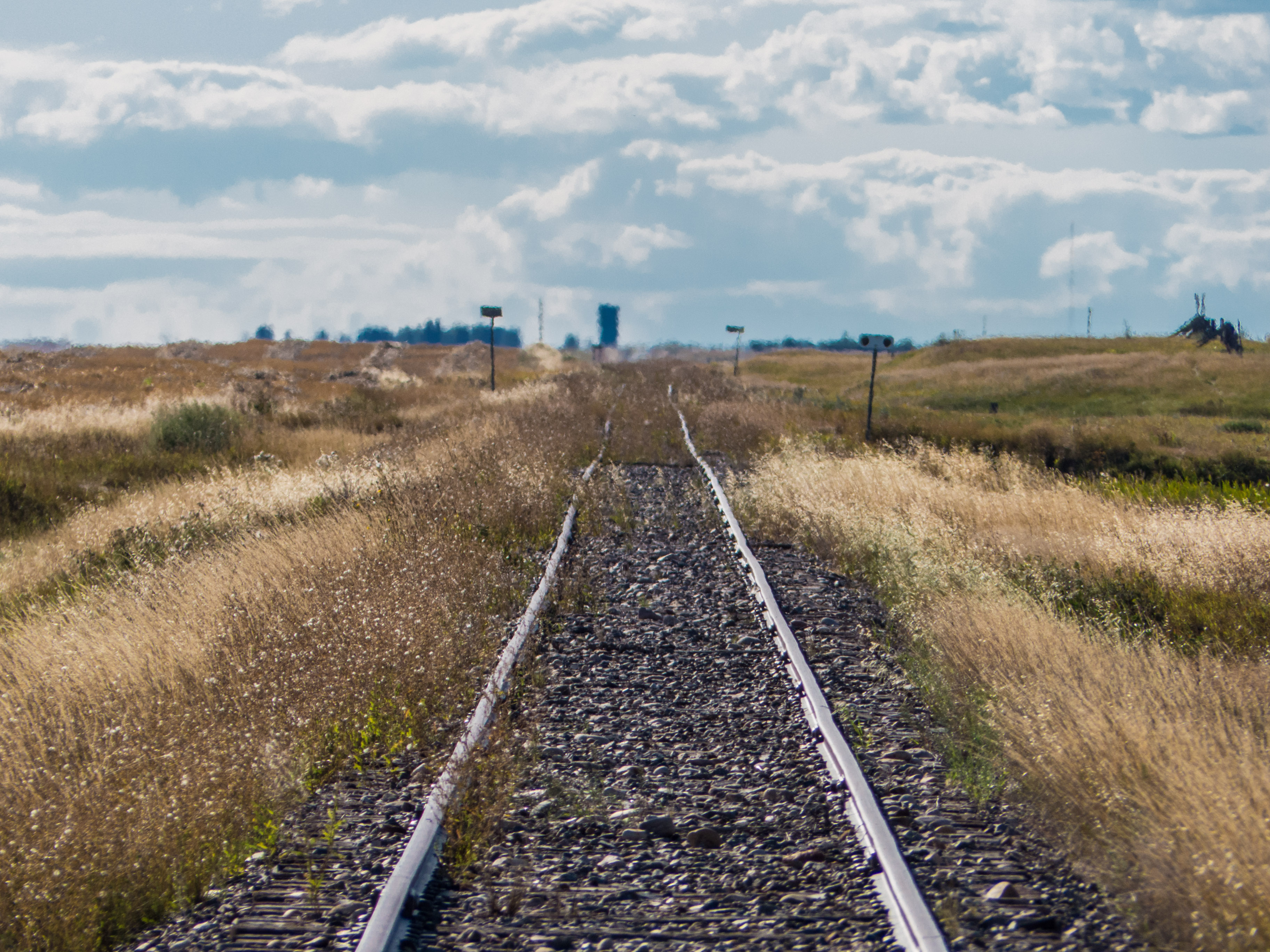
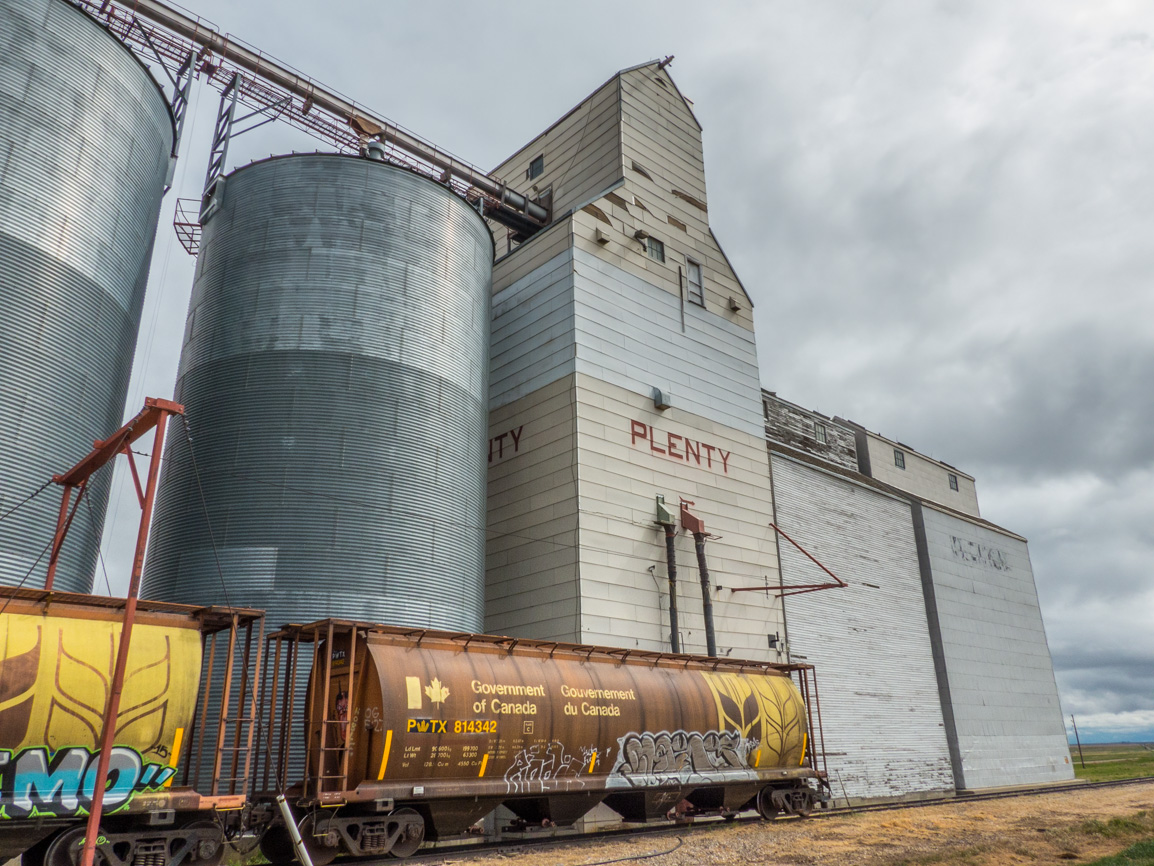
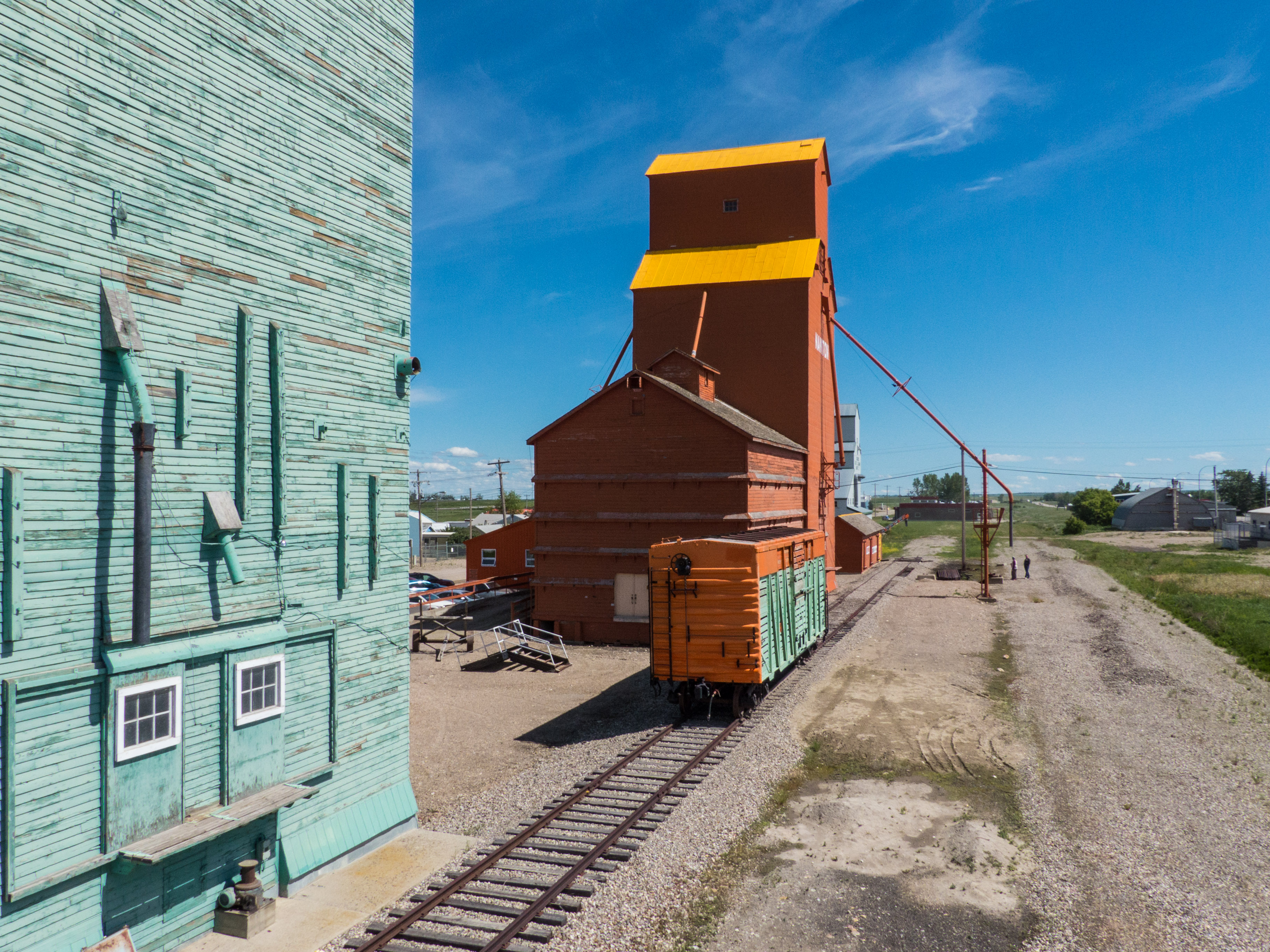
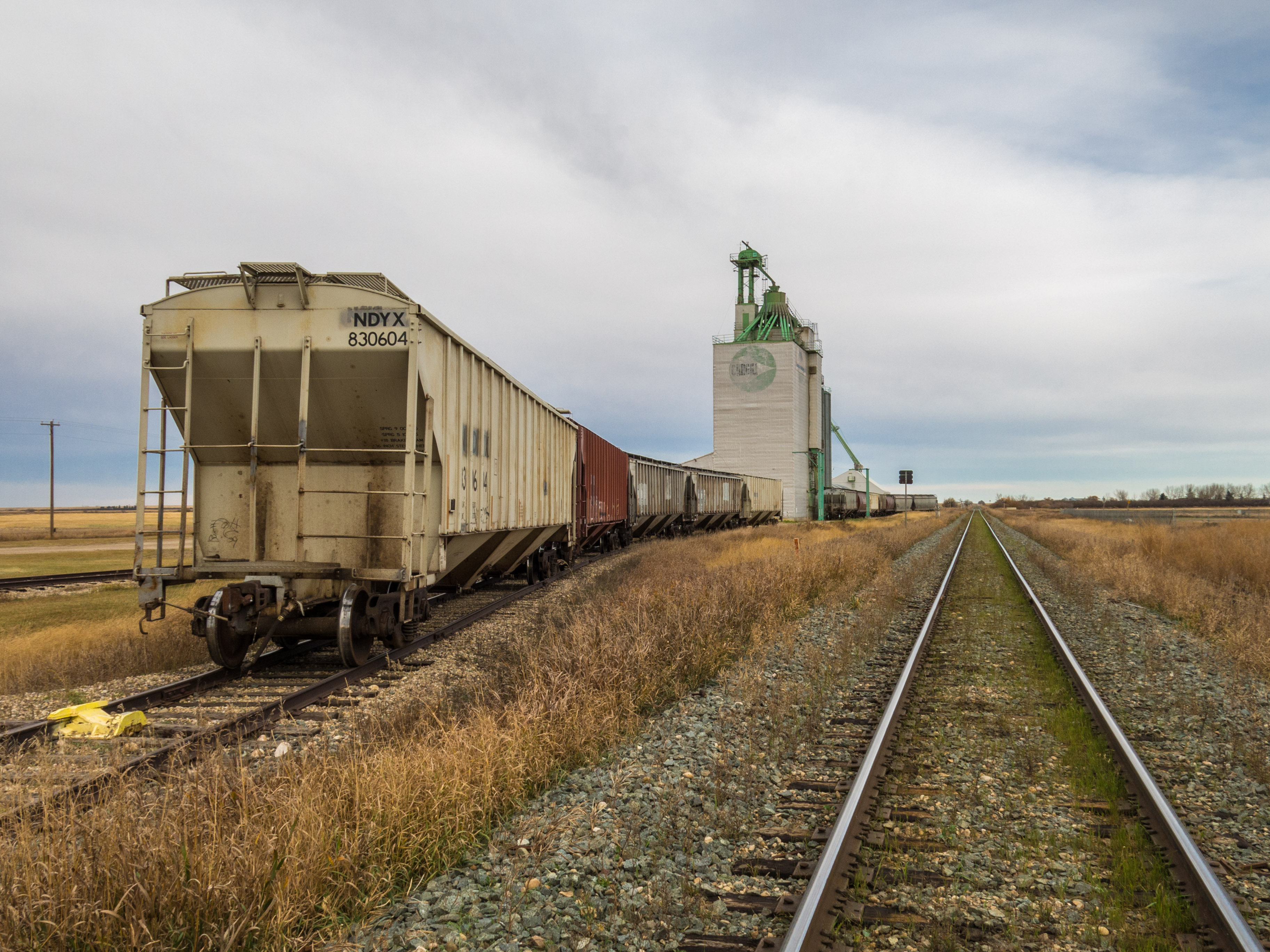







Even though I live on the West Coast, count me in as an elevator enthusiast. The highlight of my trips to the prairies was always to pass by the small towns and count the number of elevators. Such a tragic loss. I will still travel to Warner and photograph the remaining elevators, though.
We’re so glad you haven’t lost enthusiasm for them. Thanks for commenting.
What a tragic loss.
Indeed!
An increasingly rare sight on the prairies, the small town elevator. A sad reality I am afraid.
Agreed, we don’t have to like it, but we must accept it. Thanks for posting.
What as sad story.
It sure is. Sigh…
Spot on Chris. I brought this to the attention of the village council about 5 or six years ago. They could have turned them into something of interest only being a short distance from the main Canamex corridor (Hwy. 4). Of coarse I got the typical, “they are just elevators, who would want to see a couple old elevators?”
That sort of attitude, it seems, is the norm.
Additionally, Johnnie Backhusky has written an article on the Warner Elevator Demo and it will be published next week in the AB Farmer Express!
Johnnie can get to the word out to a lot of people…